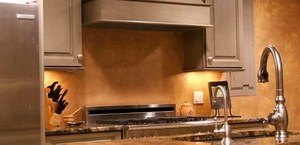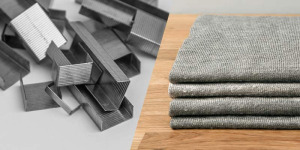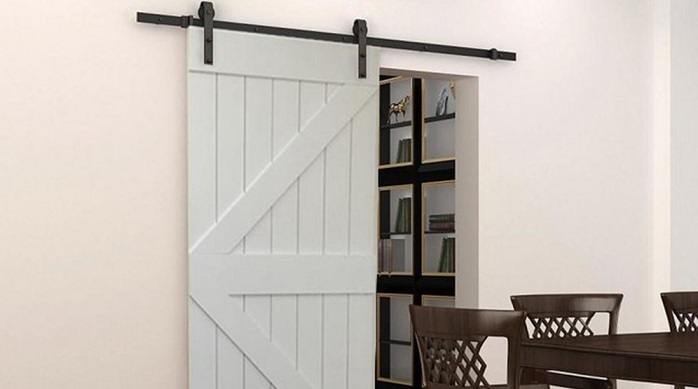On your hunt for the best paint type for your project, you’ve probably heard of enamel and latex. What’s the difference? When would you use one over the other? In this quick guide, we explain and answer your questions in the enamel vs latex debate.
While it can be hard to distinguish between latex and enamel paint once they have dried, there are some very important differences between the two. Before you undertake the repainting of an area in your home, it is vital to understand the major differences between the different types of paint available to you, and in particular the difference between enamel vs latex paint as these are some of the most popular types of house paint.
Keep reading for a full break-down of the properties of enamel and latex paints, to help you decide which kind of paint is most suitable for your project.
Most commonly, latex is used for walls and enamel is used for doors, trims and window frames.
What is Latex Paint?

First and foremost, we should make it clear that there are in a sense two types of latex paints: true latex and latex-like.
A lot of the time, people purchase a paint that is advertised as latex but the paint that they are buying actually contains no latex. Instead, the paint that they are buying has been marketed as “latex-like”. That is to say, it contains the properties of a latex paint. A lot of the paints that are advertised as “latex-like” maintain the malleability and durability of a true latex paint.
However, if you are a purist and want the real stuff, avoid the “latex-like” and opt for containers that say they contain a certain percentage of latex. For most home painting purposes, however, latex-like is what we’ve got and does the job fine.
For more information on latex paints, head over to our article about latex paints and sprayers, where we do a proper deep dive into the properties of latex paint.
What is Enamel Paint?
Enamel paint is similar to latex in that it does not actually contain any enamel. Instead, the word refers to the finish of each dried coat. Enamel paint usually delivers a hard, smooth surface that will last for years. Enamel is used as a descriptor to denote a paint that is lustrous, glossy and can survive a lot of wear and tear. As explained by Anchor Paint, while there are some water-based enamel paints, the best performing enamel paints are still oil-based making them the most common type of enamel.
Enamel Paint vs Latex Paint – Comparison Table*
| PROPERTY | LATEX PAINT | ENAMEL PAINT |
|---|---|---|
| Base | Water-based | Oil-based |
| Surface | Walls | Doors Trims Window frames Metal anything |
| Finish | Matte is common Various options | Glossy Smooth |
| Strength | Weak to Moderate^ May chip or scratch off | Very Strong Does not come off easily |
| Durability | OK to Good^ | Very good. Lasts a long time |
| Odor & Fumes | Low odor | Very strong odor and fumes Potential safety concern |
| Safety | More safe | Less safe |
| Drying Time | Faster | Slower |
| Clean-Up | Easy | Messy Challenging |
^Depends heavily on brand and pre-painting surface treatment (eg priming).
What Are the Safety Differences?
Many enamel paints are oil-based. This means that they are known for having a very strong and pungent odor. By contrast, many paints that are marketed as a latex paint are water-based. This is known to be a far less toxic choice.
If you do choose to use an oil-based enamel paint, it is essential to be vigilant and cautious when you are using it. It can cause respiratory issues or feelings of dizziness if not carefully applied. Water-based paints do not have these detriments. They bear a much less offensive smell.However, both sorts of paints are high in volatile organic compounds (VOC). When you are making your decision, go for a paint that is labeled as “low-VOC” or “zero-VOC”. Additionally, you want to take the standard precautions when you are getting set up for a project.
Make sure that the room is well-ventilated. As fumes can effect children poorly, be sure to keep young ones away from wet or tacky paint. Ultimately, latex paint is considered a safer option than enamel if you would like to avoid irritation to your eyes, skin and respiratory system.
How Long Do They Take to Dry?
Even though oil-based paints usually take longer to cure, many consumers say that they have an incredible finish once they are fully dry. Just as overall drying time is longer, your clean-up will be more involved.
These paints cannot be cleaned with water, so it is crucial to get a paint thinner specially formulated to remove it from surfaces. For those who value convenience, latex paints both dry more quickly and you can clean up any spills with water and soap.
Enamel vs Latex Paint for Different Surfaces?
For ease of use and the least amount of hassle, a latex paint is going to be your best bet. However, some projects require the high-quality and luxurious luster of enamel paint. The best way to get the best of both worlds is to paint the walls of a room with latex paint while reserving enamel paint for trims, doors and window frames. These parts tend to be used more often, so it is better to give them the hardy, strong finish of enamel paint. However, if you are painting a metal surface, you want to use an enamel paint or similar oil-based paint. Water-based paints can lead to rust and disrepair.
Final Verdict
It can be arduous to comprehend the difference between enamel and latex paint. In brief, latex paint has less of an odor and is easier to clean up but it does not have the strength, shine, and long-lasting nature of enamel paint. It is vital to your project to know that when you are deciding on paint to use that you need to make compromises.
For painting high-use areas of a house (such as doors and window frames), enamel paint is desirable. It offers a sleek and durable surface that is perfect for areas that see a lot of wear and tear. Enamel paints used to be used exclusively but advancements in the quality of latex paints has made them almost as good. Latex paints are often more desirable for walls because of their ease, easy clean up and fewer safety concerns. The most common practice is to use latex paint on the walls, and enamel on doors, frames and trims, so if you are unsure just go for this method. Your trims, doors and frames are usually in a different color from the walls, so using an enamel paint in a different color is a good way to add an accent, both in terms of color but also texture & finish.
For more tips on painting your home, check out our complete guide to painting the interior of a house for beginners, and how to use a paint sprayer to paint internal walls.
Author
-

A jack of all trades, Todd has been a DIY enthusiast, traveler, and writer for many years. He has a deep understanding of all types of painting tools and door hardware, and has shared many articles on these topics throughout the years.
View all posts









